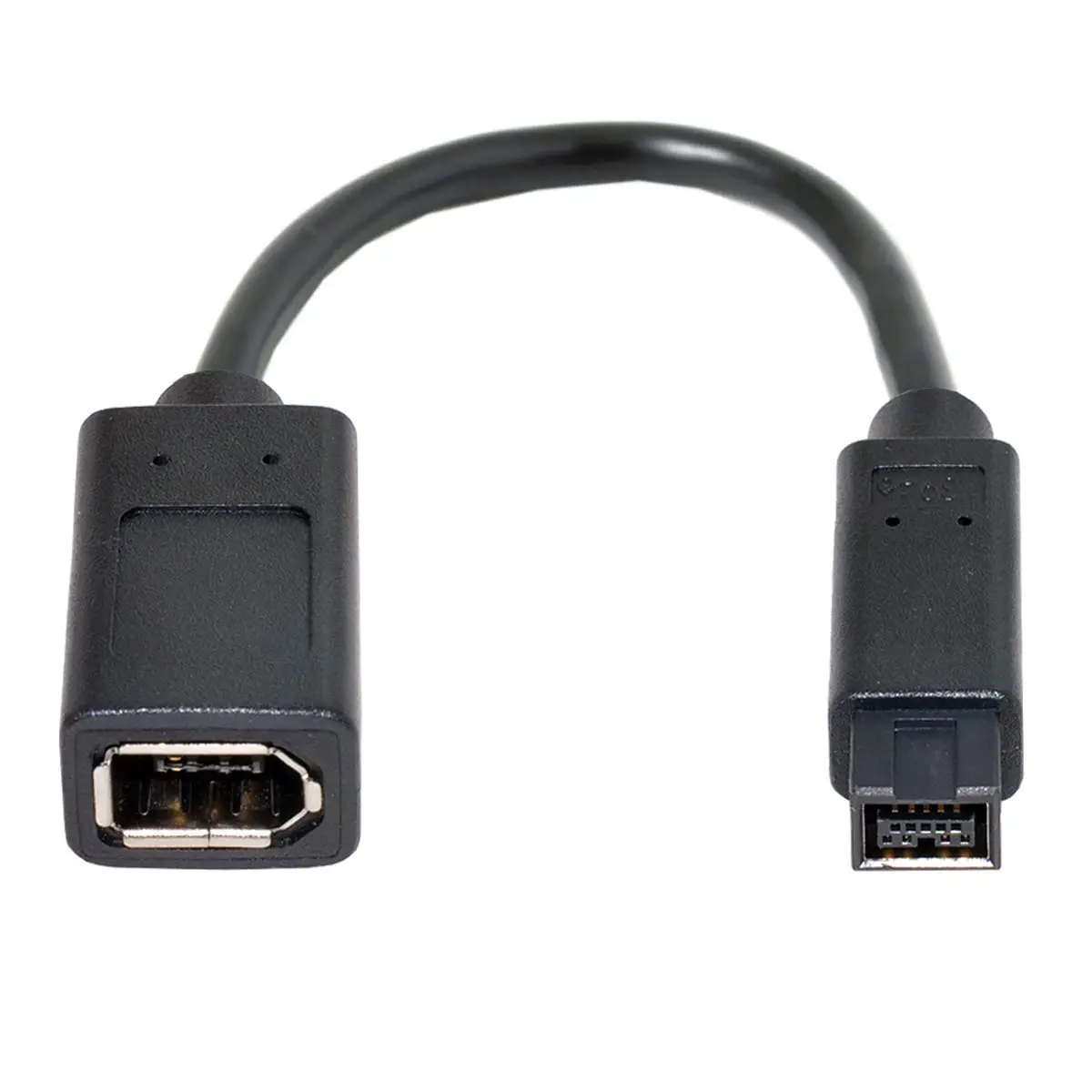How does a USB-C to FireWire 400 to HDMI adapter work?


USB-C is a versatile and widely used connectivity standard that allows for the transfer of data, audio, and video signals between devices. However, there are still many older devices and peripherals that use different connection standards, such as FireWire 400 and HDMI. To bridge the gap between these technologies, an adapter is needed. In this article, we will explore how a USB-C to FireWire 400 to HDMI adapter works, its compatibility, and the benefits it offers.
Understanding USB-C
USB-C, also known as USB Type-C, is a relatively new standard that has gained popularity due to its small size, reversible design, and high data transfer speeds. It is capable of delivering power, data, and video signals over a single cable, making it a convenient choice for many digital devices.
Introducing FireWire 400
FireWire 400, also known as IEEE 1394 or i.LINK, is an older connectivity standard that was commonly used in the early 2000s. It was primarily used for high-speed data transfer between digital devices, such as camcorders, external hard drives, and audio interfaces. FireWire 400 offers a maximum data transfer rate of 400 Mbps, making it suitable for real-time audio and video applications.
The Role of HDMI
HDMI, or High-Definition Multimedia Interface, is a widely used standard for transmitting high-quality audio and video signals between devices. It is commonly found in TVs, monitors, projectors, and other display devices. HDMI supports various resolutions, including Full HD (1080p) and 4K Ultra HD, and can carry both audio and video signals over a single cable.
Understanding the Adapter
A USB-C to FireWire 400 to HDMI adapter is a device that allows you to connect a USB-C enabled device, such as a laptop or smartphone, to FireWire 400 and HDMI devices. It acts as a bridge between the different connectivity standards, converting the signals from one format to another.
Compatibility
Before purchasing a USB-C to FireWire 400 to HDMI adapter, it is important to ensure compatibility with your devices. Most adapters are designed to work with a wide range of USB-C devices, including laptops, tablets, and smartphones. However, it is always recommended to check the specifications and compatibility list provided by the manufacturer.
How it Works
The USB-C to FireWire 400 to HDMI adapter works by converting the USB-C signals into FireWire 400 and HDMI signals. Here is a step-by-step breakdown of how it works:
1. The USB-C port on your device is connected to the USB-C input on the adapter using a USB-C cable.
2. The adapter receives the USB-C signals and converts them into FireWire 400 and HDMI signals.
3. The FireWire 400 output on the adapter can be connected to FireWire 400 devices, such as external hard drives or audio interfaces, using a FireWire 400 cable.
4. The HDMI output on the adapter can be connected to HDMI devices, such as TVs or monitors, using an HDMI cable.
5. Once connected, the adapter allows for the transfer of data, audio, and video signals between the USB-C device and the FireWire 400 and HDMI devices.
Benefits of Using an Adapter
Using a USB-C to FireWire 400 to HDMI adapter offers several benefits:
1. Compatibility: It allows you to connect USB-C devices to FireWire 400 and HDMI devices, expanding the range of peripherals you can use.
2. Convenience: Instead of purchasing separate adapters for each connection standard, a single adapter can handle multiple connections.
3. Versatility: The adapter can be used with a wide range of USB-C devices, making it a versatile solution for different setups.
4. High-quality signal transmission: The adapter ensures that the audio and video signals are transmitted without any loss in quality, providing a seamless experience.
In conclusion, a USB-C to FireWire 400 to HDMI adapter is a valuable tool for connecting USB-C devices to FireWire 400 and HDMI devices. It allows for the transfer of data, audio, and video signals between different connectivity standards, expanding the compatibility and versatility of your digital devices and peripherals. By understanding how the adapter works and ensuring compatibility with your devices, you can enjoy the benefits of seamless connectivity and high-quality signal transmission.
Recent Posts
How do I create an engaging and informative online quiz or assessment?
Creating an engaging and informative online quiz or assessment can be a powerful tool for… Read More
What are the most effective methods for managing and reducing work-related stress in the hospitality industry?
Work-related stress is a common issue in the hospitality industry, where employees often face long… Read More
How can I improve my assertiveness and communication skills in a leadership position?
In a leadership position, assertiveness and effective communication skills are crucial for success. Being able… Read More
What are the key elements of a successful employee recognition and rewards program?
Employee recognition and rewards programs play a crucial role in motivating and engaging employees, as… Read More
How do I effectively manage and respond to customer feedback and reviews?
Customer feedback and online reviews play a crucial role in shaping a company's reputation and… Read More
What are the best strategies for effective time management as a stay-at-home parent?
Effective time management is crucial for stay-at-home parents who juggle multiple responsibilities on a daily… Read More